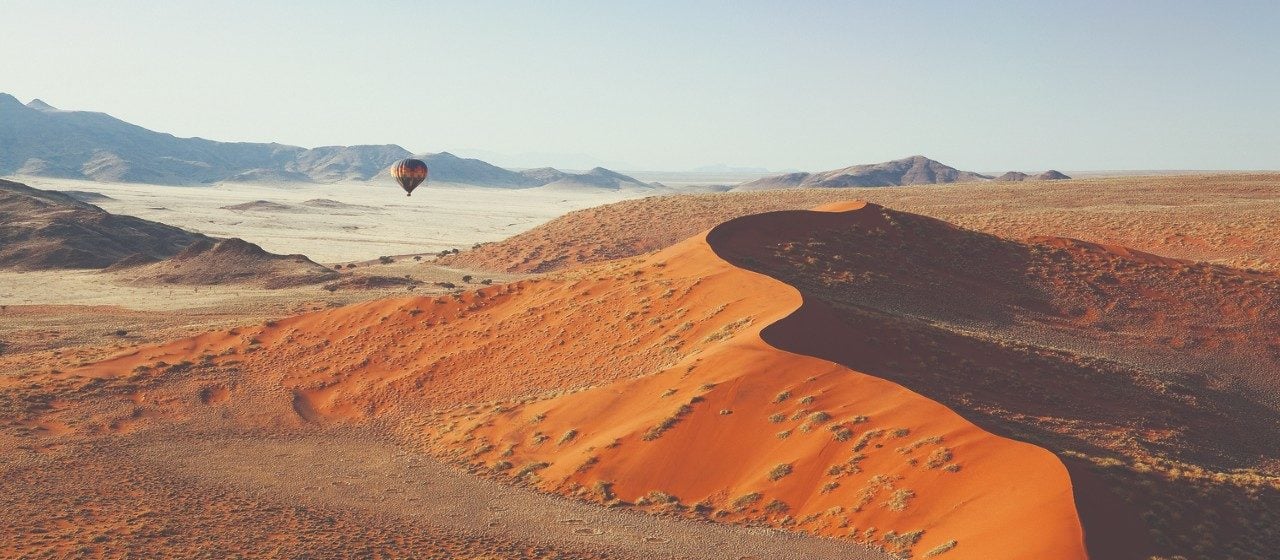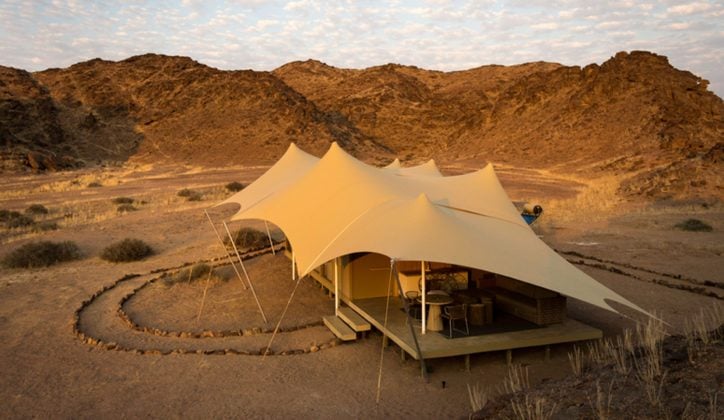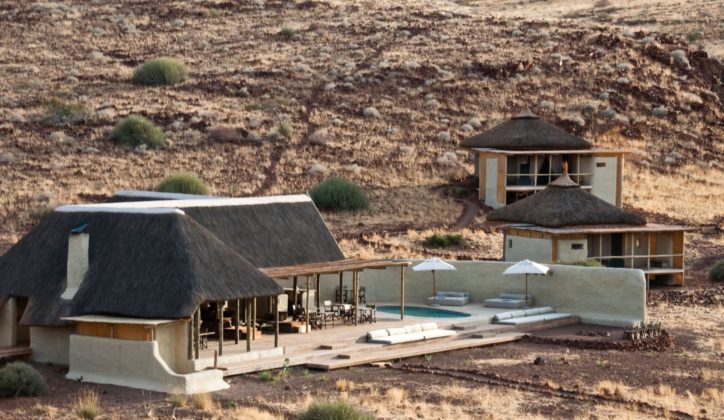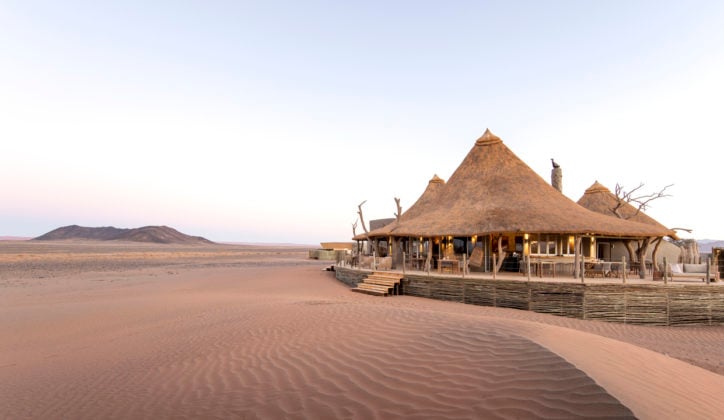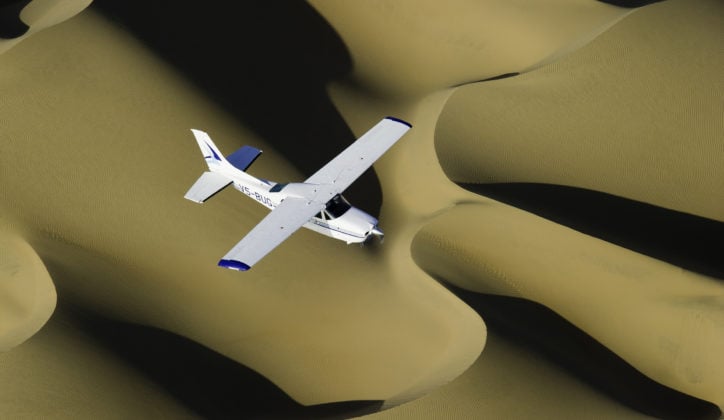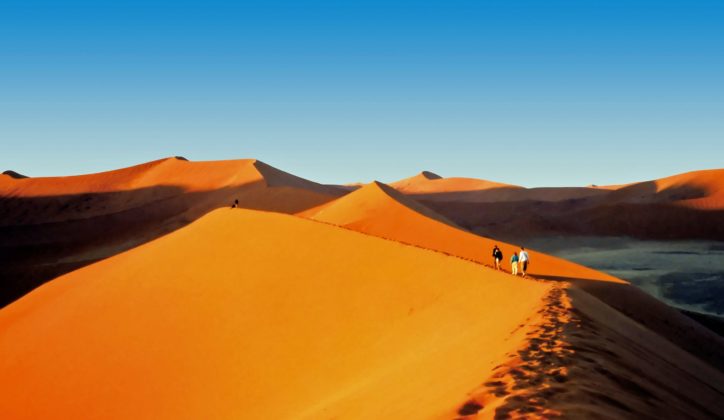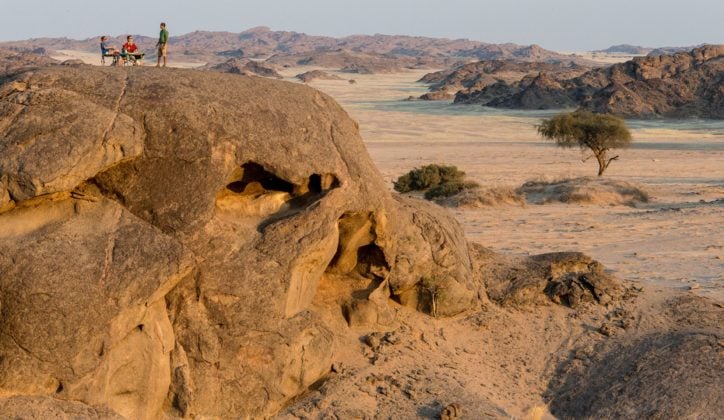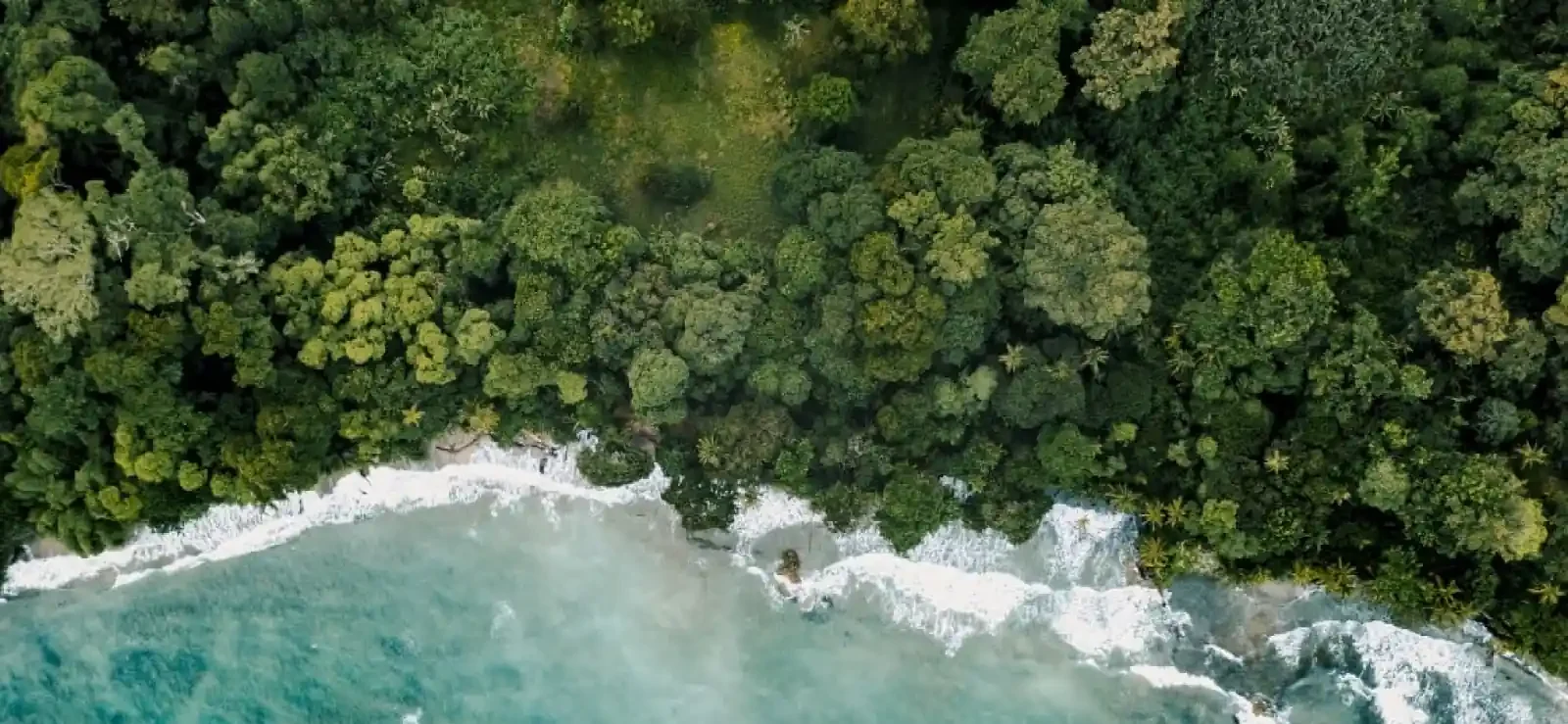Published on: August 15th, 2017
Last updated: July 27th, 2023
The best time to visit Namibia is during winter, between July to November. Days are moderate to warm, with temperatures of 21-29°C (70-84°F). There’s very little rain and the nights are cool. The land becomes dry and less vegetation creates excellent wildlife viewing conditions. Animals gather around the scarce water sources forming impressive wildlife densities.
The summer months of December to March are much hotter with heavy rainfall. Vegetation flourishes and desert flowers make an appearance. Smaller game can now move away from predators as water sources increase. With sightings of newborn animals, migratory birds and less dust in the air, this is the best time to travel to Namibia for photographers.
To help you decide on the best time to travel to Namibia we’ve put together the ultimate climate guide. We’ll help you navigate the climate, seasons and activities with the knowledge and experience of our Jacada experts.
Monthly Climate Guide for Namibia
Although Namibia is a dry, desert country, each month brings shifts in the climate. Changes in rainfall and temperature alter the landscapes and wildlife – some months become great for safari and hot air ballooning, others best for dramatic landscapes and photography.
January is summertime in Namibia and also the wet season. When the rains fall they’re heavy, often with afternoon thunderstorms that create dramatic skies. Very hot day time temperatures of up to 40°C (104°F) are common and even nighttime is warm.
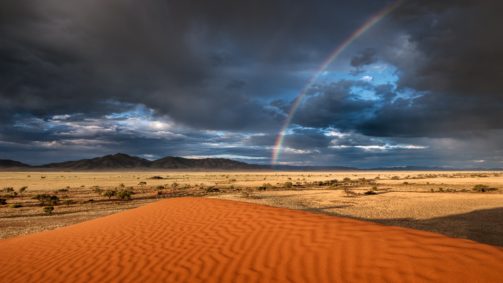
February is another wet month in Namibia. Similar to January, you can expect rainfalls in the afternoons. It can feel very humid at this time of year with temperatures reaching up to 40°C (104°F).
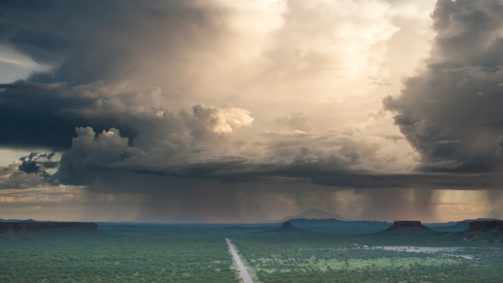
In March the rains will start to recede and the temperatures cool a little. There’s a marked difference between night and day with cool mornings of around 15°C (59°F) with mid day temperatures at around 30°C (86°F), often higher in the desert.
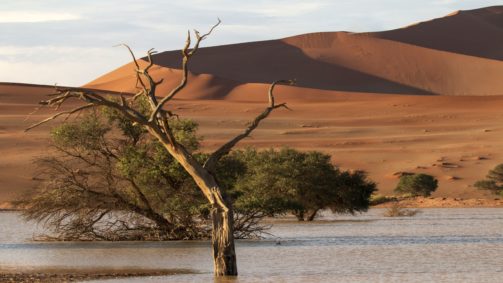
The rainfall drops in April with just a few lingering showers remaining. Temperatures are starting to become more comfortable, staying around the mid 20°Cs (70°Fs) during the day. April signifies the start of what’s known as the ‘shoulder season’.
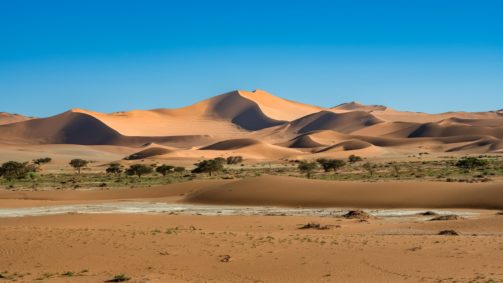
May is the official start of winter but still part of the shoulder season. Water sources haven’t dried up yet so the wildlife is dispersed, making it harder to spot.
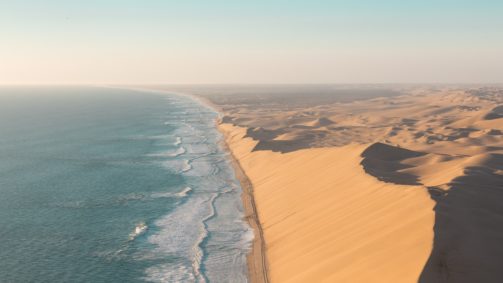
In June, early morning game drives can start to feel very chilly as the winter gets underway and temperatures drop. Water sources are starting to dry up and by the end of the month conditions start to become ideal for safaris.
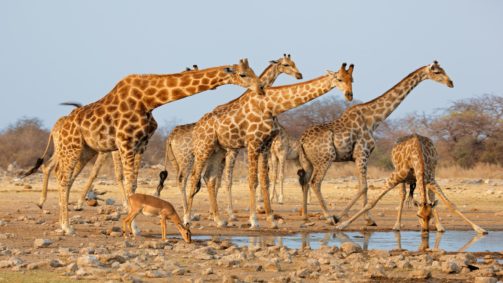
July is one of the best times to visit Namibia. Days feel warm at around 21-29°C (70-84°F) and nights are chilly, sometimes dropping to freezing in the desert. There’s no rain, so this creates high densities of wildlife around the few remaining waterholes.
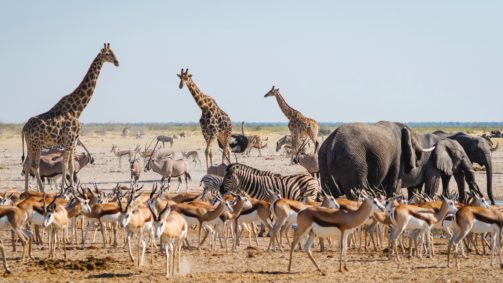
August is similar to July, these are the main winter months and the busy season for Namibia. There’s no rain at all and cobalt blue skies against the bright orange of sand dunes is a sight to behold. Very little vegetation makes visibility superb for game viewing.
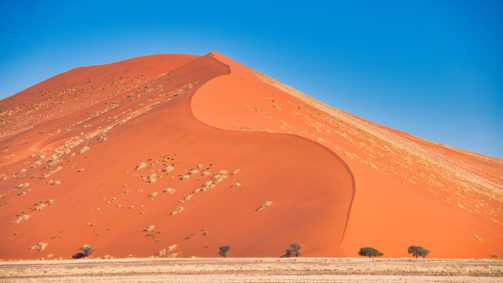
September is a beautiful month and one of the best times to go to Namibia. Just like July and August game viewing is excelling but you can expect fewer crowds.
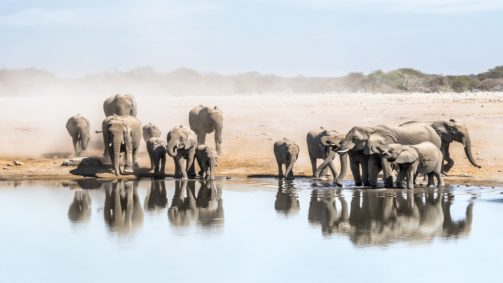
A very hot dry month, water sources are now scarce and it’s common to find masses of animals congregating around one waterhole. At this time of the year, it gets scorching hot and day time temperatures can exceed 29°C (84°F).
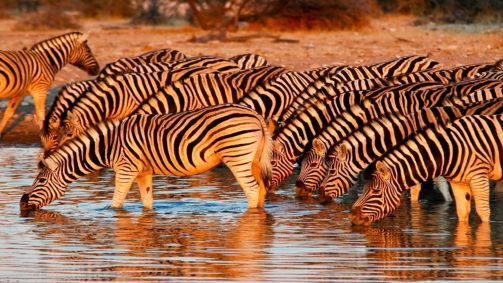
November is the end of the dry season in Namibia. Temperatures are high with midday desert temperatures as high as 40°C (104°F). Heavy downpours in the afternoon are common but come as a welcome relief to the hot weather.
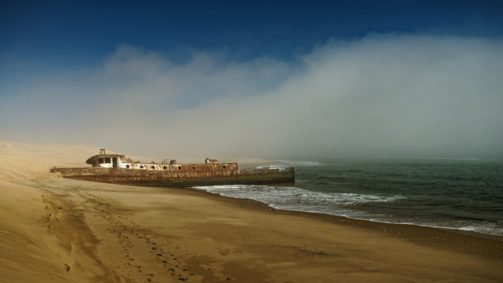
December is the start of the rainy season in Namibia. This marks the beginning of the summer. You can expect hot temperatures of around 30°C to 35°C (86°F to 95°F) and sometimes reaching up to 40°C (104°F) in the desert.
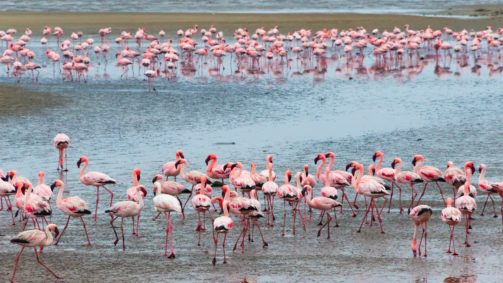
Top Things to Do in Namibia
Other than going on safari, there are lots of incredible things to do and see in Namibia. Seasonality is something to bear in mind when selecting the best time of year to go. Here’s our list of the best times to experience some of our favourite Namibian highlights.

Go on safari in Namibia
The best time to go on safari in Namibia is during the winter season between July and November. Etosha National Park and Ongava Private Reserve are great for game drives at this time. This period brings dry weather conditions and little vegetation. Less water attracts congregations of lions, rhinos, elephants, wildebeests, zebras, springboks and many more. You can see them gather around watering holes creating impressive wildlife densities.

See desert flowers bloom
At the first sign of spring, the desert flowers across the Namib desert start to bloom. It's usually only for a short time of around two weeks so timing is crucial. The rains can begin as early as October with sharp showers piercing through the hot afternoons. As soon as the dry, thirsty ground starts to be replenished the desert comes to life with a carpet of pretty desert flowers.

Go birdwatching
The Caprivi strip, which runs alongside wildlife-rich northern Botswana, is Namibia’s premium birdwatching region. There are breathtaking bird watching opportunities in the summer months between November and February, with more than 450 species recorded in the area. Migratory birds also pass through at this time, using the thicker than usual green foliage as protection against prey. Around the same time you can also head to Swakopmund to see thousands of pink flamingos gathering on the lagoons.

Stargazing
The best time to visit Namibia for stargazing is in the winter months of July and August. There is no rain at this time so the skies are clear. The lack of light pollution in the vast desert means that Namibia offers some of the best stargazing on the planet.
Lots of properties include star gazing activities, and even have star bed sleepout options included for guests. Doro Nawas Camp in Damaraland will arrange your beds on your verandah for a night under the stars. It’s important to remember that if you travel on a full moon, even if conditions are good the bright moonlight will blind your view of the stars. Also, a reminder, it can be very cold at night during this time so be sure to pack warm clothes.

Rhino tracking on foot
Rhino tracking on foot is a once in a lifetime experience and Namibia is one of the only countries in the world where you can do this. We recommend a stay at Desert Rhino Camp in the Palmwag concession, run in conjunction with the Save the Rhino Trust for the best on foot experience. July through to September when the vegetation is almost gone is a great time to get close to the rhino on foot.

Hot Air Balloon flights
Hot air balloon safaris are a must do experience for anyone who wants to try and grasp the enormity of the Namibian landscapes. Head to Sossusvlei where the activity runs almost all year, closing from January to February due to heavy rains and possible thunderstorms. We recommend July through to September for the very best clear, calm conditions. Clear skies showcase the incredible dawn colours; this is an experience you’ll never forget.

See the Dunes of Sossusvlei
The best time to visit Sossusvlei for its infinite desert vistas is during the winter months, between July and September. This period brings mild temperatures and sees dry conditions. The clear skies at this time are also ideal for enjoying the stars, either during stargazing excursions or from your own ‘star bed’ at Little Kulala.

Skeleton Coast Excursions
While ideal all year round, stable weather conditions and mild temperatures make October to March the best time to visit the Skeleton Coast. During these warmer months, you can expect clear skies and little rainfall. This time of year brings warmer evenings than during the winter months of July to September.
For a memorable way of enjoying the surroundings, we recommend taking the flying safari excursions at Hoanib Camp. October to November is the best time to visit to see seal pups being born on the coast.
Where to Stay in Namibia
Our Team's Favourite Trips to Namibia
Whatever you want from your trip to Namibia, our team of expert travel designers are ready to help.

